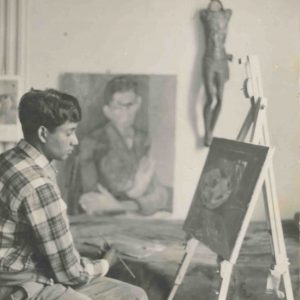
The Filofax and the Ape: Material approaches to the work of Albert Adams
Writer and curator Greg Thorpe reflects on the work of Albert Adams and his visit to the University of Salford Art Collection stores to explore the Albert Adams archive.

Writer and curator Greg Thorpe reflects on the work of Albert Adams and his visit to the University of Salford Art Collection stores to explore the Albert Adams archive.